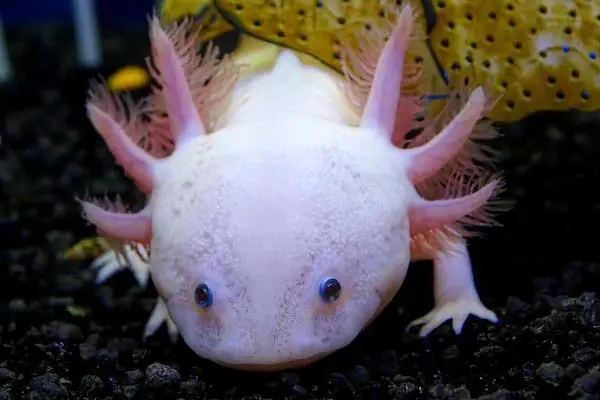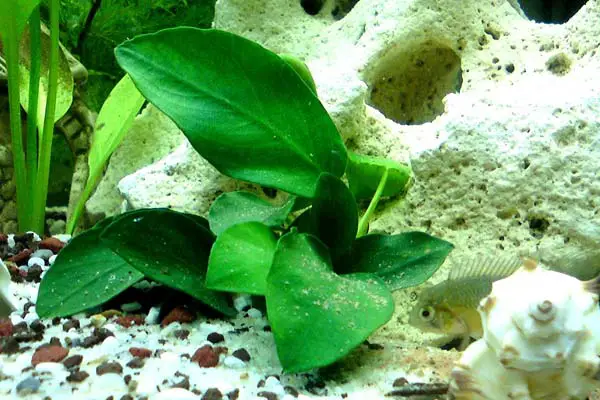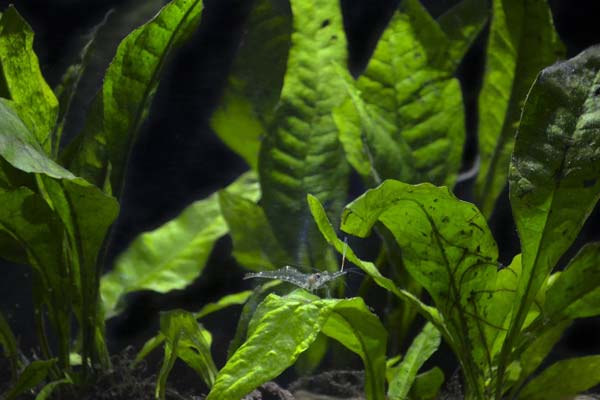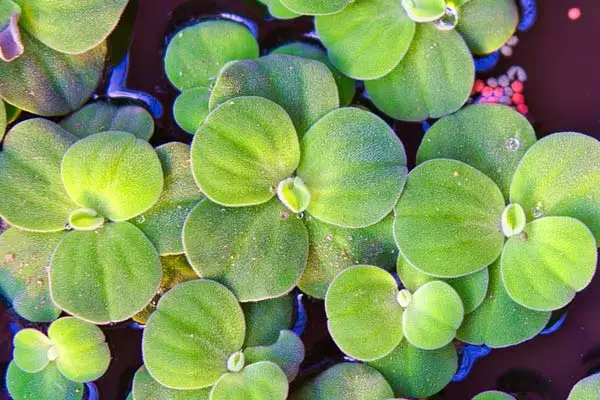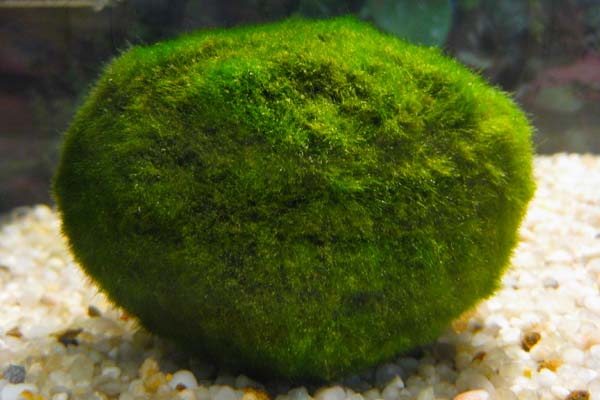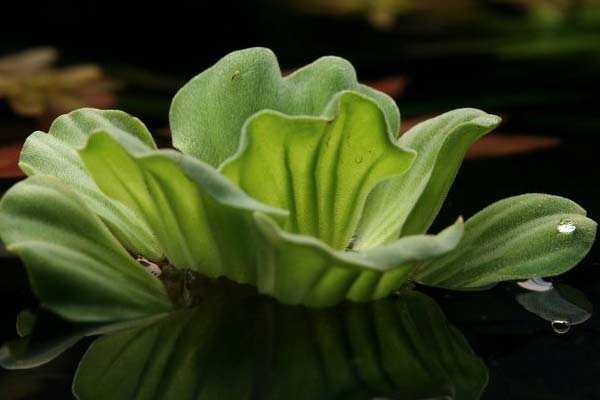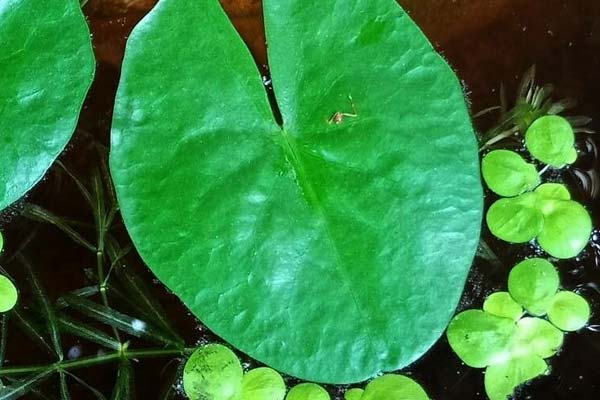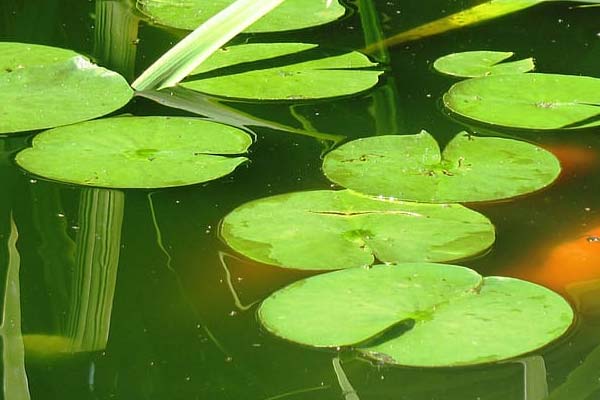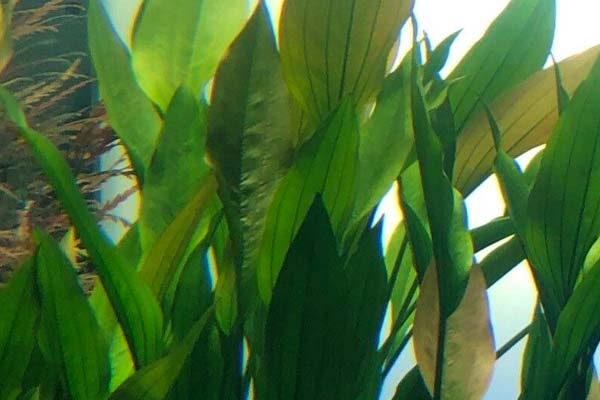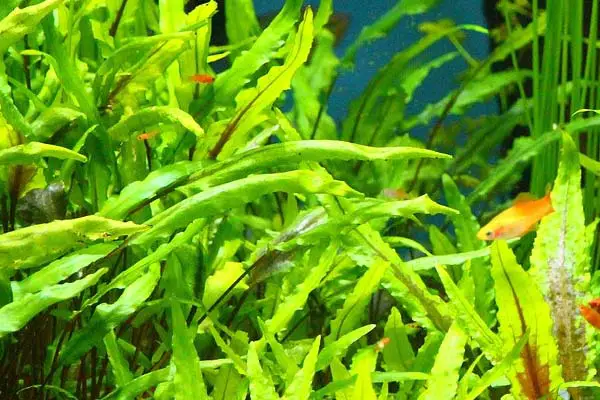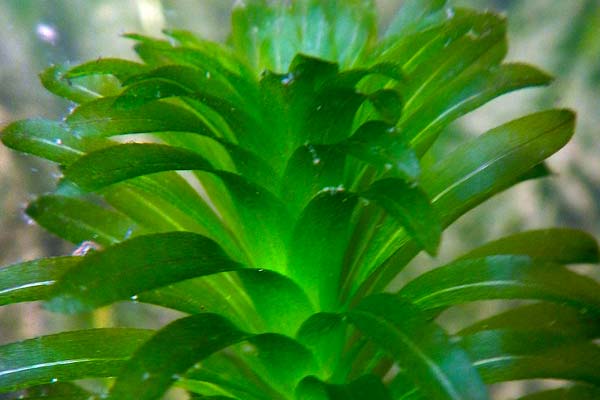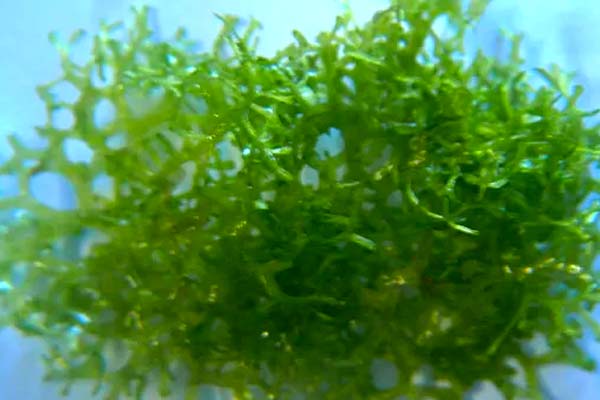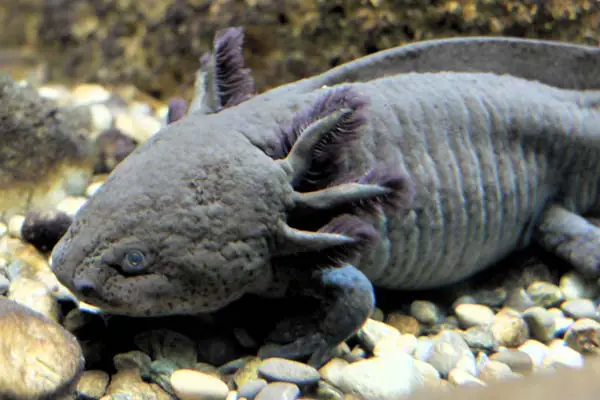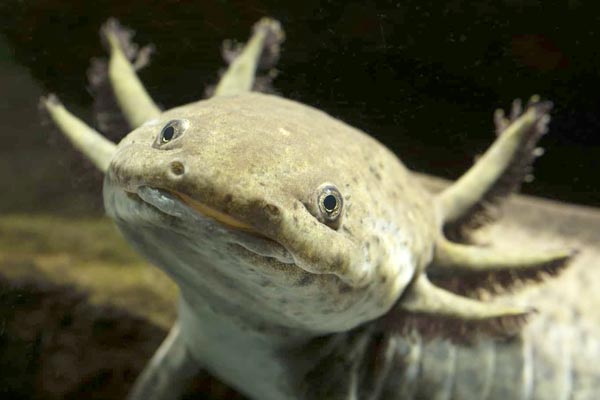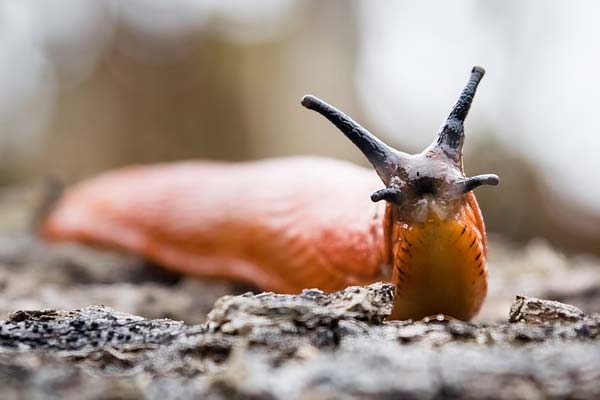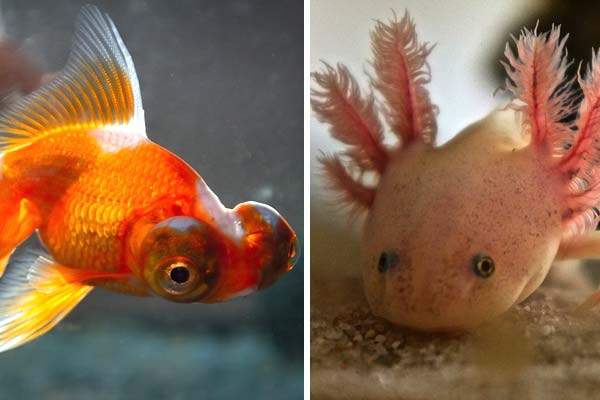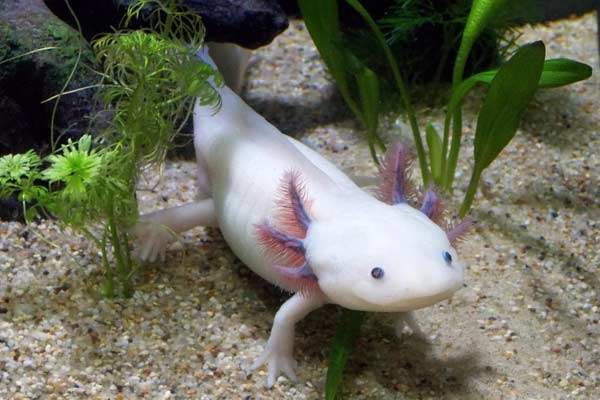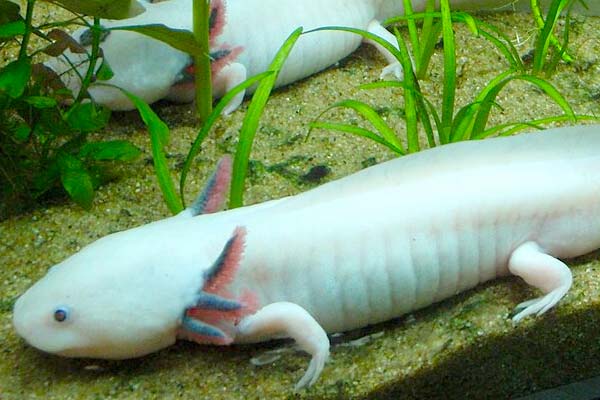Plants for Axolotl Tanks: The Best Options for a Healthy Habitat
Plants for axolotl tanks are essential for the well-being of these aquatic creatures. Axolotls are sensitive to water conditions, and live plants can help maintain a healthy environment by providing oxygen, absorbing toxins, and reducing stress.
Choosing the right plants for axolotls can be challenging, as some plants can be toxic or easily uprooted.
Anubias, waterweed, hornwort, and cryptocoryne usteriana are some of the best plants for axolotls. Anubias are hard and resistant, making them an excellent choice for axolotls and other aquarium setups.
Waterweed is a fast-growing plant that can quickly absorb excess nutrients and provide a hiding place for axolotls. Hornwort is a free-floating plant that can help oxygenate the water and reduce stress levels.
Cryptocoryne uterine is a slow-growing plant that can withstand a wide range of water conditions and provide a natural-looking environment for axolotls.
Great Aquatic Plants for Axolotl Tanks
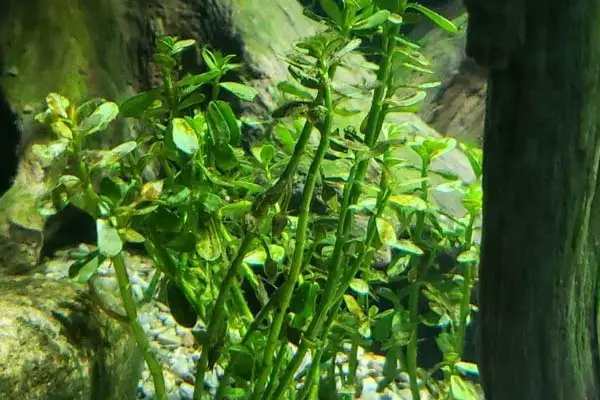
Elodea
Elodea, or waterweed, is a popular aquatic plant for axolotl tanks. It is hardy, adaptable, and suitable for beginners and experienced fish keepers.
Characteristics:
- Long, thin stems that can grow several feet long.
- Small, bright green leaves are arranged in whorls along the stem.
- Fast-growing and requires regular pruning to prevent overgrowth.
Benefits:
- Excellent oxygenator, absorbing carbon dioxide and releasing oxygen.
- Helps absorb excess nutrients, reducing the risk of algae growth.
Care requirements:
- Thrives in various water conditions.
- Prefers cooler temperatures between 60-75°F (15-24°C).
- pH level between 6.5-7.5, but tolerant of different pH levels and water hardness.
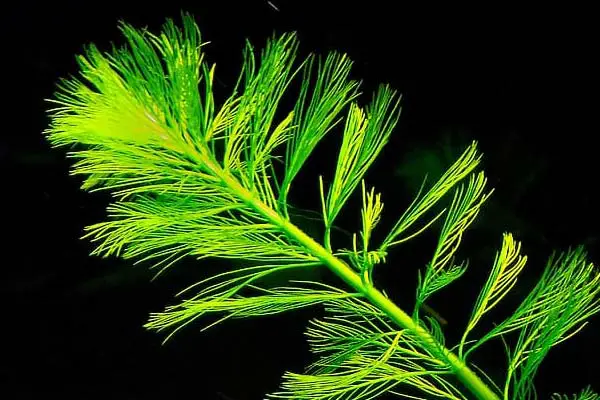
Hornwort
Hornwort is a popular aquatic plant for axolotl tanks due to its hardiness and adaptability to different water conditions. It has long, feathery stems that grow in a bush-like pattern.
Benefits:
- Improves water quality by absorbing nutrients and reducing algae growth.
- Provides natural hiding places for axolotls and other aquatic animals.
Care requirements:
- Does not need special lighting or fertilizers.
- Can grow in various temperatures.
- Can be anchored or left to float freely.
Considerations:
- Regular trimming is necessary to prevent overgrowth.
- Delicate stems that can break easily if handled roughly.
Anubias
Anubias is a popular and hardy aquatic plant for axolotl tanks. It can withstand the rough behavior of axolotls and is native to Africa, belonging to the Araceae family.
Characteristics:
- Slow-growing plant reaching up to 16 inches in height and 8 inches in width.
- Anubias Nana: Compact size, dark green, oval-shaped leaves.
- Anubias Barteri: Rounder leaves can grow up to 18 inches tall.
- Anubias Isabelle: Taller than Nana, similar hardiness.
Benefits and Care:
- Does not require high lighting or CO2 injection.
- Rhizomatous plant with a horizontal stem (rhizome) for easy propagation.
- Tolerates various water conditions, including low pH and oxygen levels.
- Can be connected to rocks or driftwood using fishing lines or glue.
- Suitable for planted aquariums without substrate, it can grow in sand or gravel.
Java Fern
Java Fern, scientifically known as Microsorum Pteropus, is a favored aquatic plant among axolotl enthusiasts. It is a slow-growing and resilient plant that thrives in various water conditions. Java Fern provides hiding spots for axolotls and enhances the visual appeal of the tank.
Characteristics:
- Features horizontal stems called rhizomes that attach to rocks, driftwood, or other decorations.
- Ideal for aquascaping due to its attachment capabilities.
- Long, thin, soft, green leaves that provide a safe resting place for axolotls.
Care requirements:
- Low-maintenance plant that tolerates low-light conditions.
- No additional fertilizers are needed.
- Ensure rhizomes are not buried in the substrate to prevent rotting.
- Tying the plant to rocks or driftwood using a fishing line or thread is recommended.
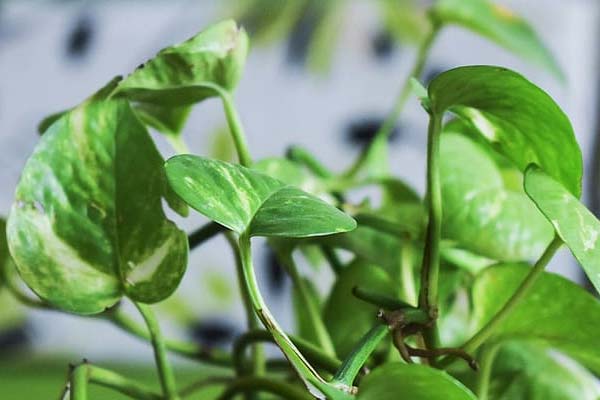
Pothos
Pothos, also known as Devil’s Ivy, is a popular aquatic plant for axolotl tanks due to its adaptability and easy care.
Characteristics:
- Vine plant that can grow submerged or emersed.
- Versatile addition to the tank.
Benefits:
- Absorbs excess nutrients and nitrates, helping to keep the tank clean.
- Air-purifying properties improve air quality.
Care requirements:
- Submerge roots while keeping leaves above the waterline.
- Thrives in low to moderate lighting.
- Minimal fertilization is needed.
- Regular trimming to prevent overgrowth.
Duckweed
Duckweed is a floating plant that can significantly add to an axolotl tank. It is a small plant that floats on the water’s surface and can provide shade and cover for your axolotl. Here are some key points to consider when adding duckweed to your tank:
Easy to Care For: Duckweed is a low-maintenance plant requiring little attention. It can thrive in various water conditions and requires no special lighting or fertilizers.
Provides Shade and Cover: Axolotls are sensitive to bright light and can become stressed if they do not have enough shade and cover. Duckweed can provide both, making your axolotl feel more comfortable and secure in their environment.
Helps Maintain Water Quality: Duckweed is a fast-growing plant that can help absorb excess nutrients in the water, such as nitrates and phosphates. This can help improve water quality and decrease the risk of algae growth.
Can Be Overgrown: While duckweed can be a great addition to an axolotl tank, it can also overgrow and cover the entire surface of the water if not controlled. It is crucial to monitor the growth of duckweed and remove any excess to prevent it from overcrowding the tank.
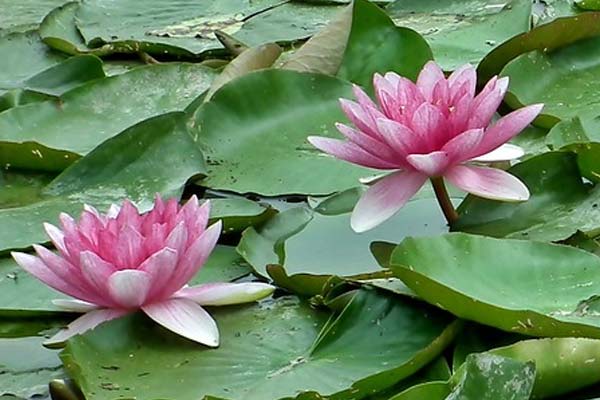
Water Lily
Water lilies are popular additions to axolotl tanks for their beauty and benefits.
Characteristics:
- Available in various colors.
- Found in tropical and temperate climates.
Benefits:
- Provide shade and hiding spots, reducing axolotl stress.
- Oxygenate water and absorb excess nutrients, keeping the tank clean.
Considerations:
- Choose a species suitable for tank size and water conditions.
- Proper planting in a pot with aquatic substrate.
- Adjust the water level so leaves float on the surface.
Moss Balls
Moss balls, also known as Marimo, are famous for axolotl tanks due to their unique appearance and ease of care. These aquatic plants are algae that grow into a ball shape, resembling a moss-covered rock. Here are some key points to consider when adding moss balls to your axolotl tank:
Easy to care for: Moss balls are low maintenance and can thrive in various water conditions. They do not require special lighting or fertilization, making them an excellent choice for beginners.
Natural filtration: Moss balls are excellent natural filters, helping to absorb harmful toxins and chemicals from the water. They can also help to oxygenate the water, creating a healthier environment for your axolotl.
Soft and safe: Moss balls are soft and gentle to the touch, making them a safe choice for axolotls. They do not have any sharp edges or spines that could harm your pet.
Aesthetic appeal: Moss balls have a unique and exciting appearance that can add visual interest to your axolotl tank. They come in various sizes and can be arranged differently to create a natural-looking aquatic landscape.
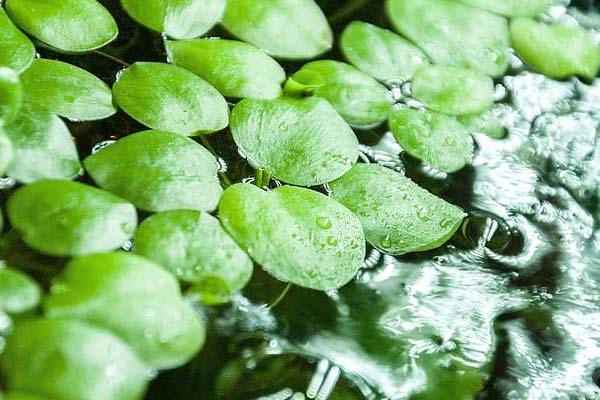
Frogbit
Frogbit, also known as Amazon Frogbit, is a popular floating plant for axolotl tanks.
Characteristics:
- Small, round leaves that float on the water’s surface.
- Provides shade and cover for axolotls.
Care requirements:
- Tolerates various water conditions.
- Thrives in temperatures between 68-82°F and pH range of 6.5-7.5.
- Can handle low to moderate lighting conditions.
Benefits:
- Absorbs excess nutrients and waste, improving water quality.
- Oxygenates the water.
- Natural food source for axolotls.
Water Lettuce
Water lettuce is a popular floating plant for axolotl tanks, known for its unique appearance and beneficial properties.
Characteristics:
- Resembles a small floating head of lettuce.
Benefits:
- Improves water quality by absorbing nutrients.
- Provides shade and cover, reducing axolotl stress.
Care requirements:
- Thrives in various water conditions.
- Prefers temperatures between 68-82°F and moderate to high lighting.
- Propagated by dividing and replanting.
Considerations:
- Regular pruning to prevent overgrowth.
- Not suitable for strong water currents.
Banana Lily
Banana Lily (Nymphoides aquatica), or Big Floating Heart, is valuable to axolotl tanks.
Characteristics:
- Semi-aquatic plant native to the southeastern United States.
- Grows in submerged and emerging conditions.
- Long, thin stems with green, heart-shaped leaves.
Benefits:
- Provides hiding spots and shade for axolotls.
- Leaves grow up to 3 inches in diameter, offering resting places.
Care requirements:
- Tolerates various water conditions.
- Thrives in low to high-light environments.
- No special fertilizers or CO2 injection is needed.
Propagation:
- Easily propagated through runners for expanding plant collection.
Pennywort
Pennywort is a popular and versatile aquatic plant suitable for axolotl tanks.
Characteristics:
- Cold-water plant adaptable to various water conditions.
- Fast growth rate and low maintenance.
- Long, thin stems with round leaves up to 3 inches in diameter.
Benefits:
- Provides excellent hiding spots for axolotls.
- Leaves create a sense of security.
- Roots offer a natural substrate for exploration.
Care requirements:
- Tolerates low light levels.
- Can be planted on a substrate or float on the water’s surface.
- Moderate water flow and sufficient light are needed.
Amazon Swords
Amazon swords (Echinodorus amazonicus) are popular plants for axolotl tanks, known for their large size and ease of care.
Characteristics:
- Native to the Amazon River Basin.
- Can grow up to 20 inches tall.
- Provide ample hiding places and coverage.
Benefits:
- Remove excess nutrients, keeping the tank clean.
- Relatively easy to care for.
- Moderate lighting and nutrient-rich substrate are required.
Planting considerations:
- Ensure roots are well-covered with the substrate.
- Provide a source of iron for healthy growth.
Water Wisteria
Water wisteria (Hygrophila difformis) is a fast-growing and versatile plant suitable for axolotl tanks.
Characteristics:
- Fast-growing plant.
- Tolerates various conditions.
Benefits:
- Easy to care for, tolerates low to high light levels.
- Improves water quality by absorbing toxins.
- Provides hiding places and reduces stress.
- Oxygenates the water.
Planting considerations:
- Can be planted in substrate or attached to driftwood/rocks.
- Regular trimming may be necessary to control growth.
Brazilian Waterweed
Brazilian Waterweed (Egeria densa) is a popular, hardy plant for Axolotl tanks.
Characteristics:
- Fast-growing plant, up to 3 meters long.
- Long, slender stems with narrow leaves.
- Can grow submerged and floating.
Benefits:
- Oxygenates and filters water.
- Absorbs excess nutrients, preventing algae growth.
- Produces oxygen during the day and absorbs carbon dioxide at night.
Planting considerations:
- Anchor roots in the substrate to prevent floating.
- Propagate by cutting and replanting stems.
Water Sprite
Water sprite (Ceratopteris thalictroides) is a popular and visually appealing aquatic plant for axolotl tanks.
Characteristics:
- Delicate, lace-like leaves with vivid green color.
Care requirements:
- Fast-growing plant that fills up space quickly.
- Can float or be anchored to the substrate.
- Prefers soft, slightly acidic water (pH 6.0-7.5).
- Tolerates various light conditions but thrives with moderate to high light.
Maintenance:
- Regular pruning is necessary to control growth.
- Remove yellow or dead leaves and trim overgrown stems.
Fertilization:
- Unnecessary but benefits from occasional nutrient supplementation.
- Use liquid fertilizer or root tabs.
Floating Crystalwort
Floating Crystalwort, or Riccia Fluitans, is a popular plant suitable for axolotl tanks.
Characteristics:
- Floating plants found in slow-moving streams and ponds.
- Provides hiding places and reduces sunlight.
Care requirements:
- Easy to care for, no special lighting or fertilizers needed.
- Fast-growing, quickly covers the tank surface.
Benefits:
- Creates a dimmer environment preferred by axolotls.
- Improves water quality by absorbing excess nutrients.
Considerations:
- Requires regular trimming to control growth and prevent light/oxygen blockage.
Hygrophila Pinnatifida
Hygrophila pinnatifida is a popular and visually appealing aquatic plant suitable for axolotl tanks.
Characteristics:
- Originating from India, it can reach a height of 20 inches when fully grown.
- Versatile, can be submerged or emersed.
Benefits:
- Tolerates a wide range of water conditions.
- Fast growth absorbs excess nutrients and maintains water quality.
- Helps manage waste in Axolotl tanks.
Care requirements:
- Prefers pH 6-7.5, mild hardness.
- Can tolerate higher pH and hardness or 100% RO water with pH 6-6.5.
- Moderate to high lighting is preferred.
- Requires regular pruning to control growth.
Benefits of Plants in Axolotl Tanks
Adding live plants to an axolotl tank offers numerous benefits to the overall well-being of aquatic pets. Here are some of the advantages of having plants in an axolotl tank:
Natural Filtration: Live plants help to filter out impurities from the water, such as excess nutrients, organic waste, and harmful chemicals. This helps to maintain healthy water conditions for axolotls and reduces the need for frequent water changes.
Oxygen Production: Plants produce oxygen through photosynthesis, which helps to increase the oxygen levels in the water. This is essential for the health of axolotls as they require high levels of dissolved oxygen to survive.
Stress Reduction: The presence of live plants in an axolotl tank can help to reduce stress levels in aquatic pets. Plants provide hiding places for axolotls to retreat when they feel threatened or stressed.
Natural Habitat: Live plants create a more natural habitat for axolotls, which can help to reduce their stress levels and enhance their overall well-being. Axolotls are naturally found in freshwater environments with vegetation, so having plants in their tank can help to replicate their natural habitat.
Aesthetic Appeal: Live plants can add a beautiful and natural aesthetic to an axolotl tank. They come in various colors, shapes, and sizes, which can help create a visually appealing underwater environment.
Potential Issues with Plants in Axolotl Tanks
While live plants can provide numerous benefits to axolotl tanks, there are also some potential issues to consider. Here are some of the challenges or drawbacks associated with keeping plants in axolotl tanks:
Plant Consumption
Axolotls are known to be voracious eaters, and they may consume live plants in their tanks. This can be a problem if the plants are toxic or indigestible, as it can lead to health issues for the axolotl. Additionally, if the axolotl consumes too many plants, it can lead to excess waste in the tank, negatively impacting water quality.
Root Disturbance
Axolotls are known to be active creatures and may disturb the roots of live plants in their tank. This can lead to uprooting or damage to the plants, impacting their growth and health.
Additionally, if the roots of the plants are disturbed, it can lead to excess waste in the tank, which can negatively impact water quality.
Excess Waste
Live plants in axolotl tanks can contribute to excess waste, exceptionally if the plants are not adequately maintained. Dead or decaying plant matter can increase ammonia and nitrite levels in the tank, harming the axolotl.
Additionally, if the plants are appropriately pruned, excess plant matter can accumulate in the tank, improving water quality.
To mitigate these potential problems, there are several tips and solutions that axolotl owners can consider. These include:
- Choosing plant species that are non-toxic and hardy, such as Anubias or Elodea.
- Placing plants in areas of the tank that are less likely to be disturbed by the axolotl, such as along the sides or back of the tank.
- Pruning plants regularly to prevent excess plant matter from accumulating in the tank.
- Ensuring that the tank is filtered correctly and maintained to prevent excess waste from building up.
Additional Considerations for Planting in Axolotl Tanks
When it comes to planting in axolotl tanks, there are a few additional considerations to keep in mind to ensure the health and safety of both the plants and the axolotls.
Lighting Requirements
Plants require adequate lighting to grow and thrive, and axolotl tanks are no exception. Adequate lighting not only promotes plant growth but also helps to keep a healthy environment for axolotls.
The recommended lighting intensity for axolotl tanks is 0.5 to 1 watt per gallon of water. It is important to note that too much light can promote algae growth, which can be harmful to both plants and axolotls.
Climbing Behavior
Axolotls are known to climb and explore their environment, which can sometimes lead to uprooting or damaging plants. It is critical to select plants that can withstand this behavior or to place them in locations where the axolotls cannot easily access them. Plants with sturdy stems and roots, such as Anubias and Java Fern, are suitable for axolotl tanks.
Plant Sensitivity
Axolotls are sensitive to certain plants; some can even be toxic to them. It is essential to research each plant before adding it to the tank to ensure it is safe for axolotls. Plants known to be toxic to axolotls include Philodendron, Pothos, and Dieffenbachia.
Creating a Balanced Environment
When selecting plants for an axolotl tank, it is vital to consider the overall balance of the tank. A tank with too many plants can create an environment with low oxygen levels, while a tank with too few plants can lead to excess nutrients and algae growth. Aiming for a balance of 50% plant coverage and 50% open space in the tank is recommended.
The Safety of Moss Balls and Duckweed for Axolotls
When selecting plants for axolotls, moss balls and duckweed are popular options. However, axolotl owners may have concerns about the safety of these plants.
This section will address the safety concerns regarding moss balls and axolotls, discuss the suitability and benefits of moss balls as a plant option, and explain the considerations and precautions when using duckweed in axolotl tanks.
Safety Concerns Regarding Moss Balls and Axolotls
Moss balls are algae that grow in freshwater environments, including axolotl tanks. Some axolotl owners may be concerned that moss balls can cause harm to their pets.
However, moss balls are generally safe for axolotls to live with. They do not include any toxins or chemicals that can harm axolotls.
Suitability and Benefits of Moss Balls as a Plant Option
Moss balls are an excellent option for axolotl tanks because they provide the aquarium with a natural, aesthetic look.
Moss balls also help to keep the water clean by absorbing excess nutrients and waste. They are low maintenance and easy to care for, making them an ideal choice for axolotl owners who want to keep their tanks clean without much effort.
Considerations and Precautions When Using Duckweed in Axolotl Tanks
Duckweed is a floating plant that is sometimes used in axolotl tanks. While duckweed is generally safe for axolotls, there are some considerations and precautions that axolotl owners should be aware of. Duckweed can quickly grow and cover the water’s surface, limiting the amount of oxygen axolotls can get.
Axolotl owners should monitor the amount of duckweed in their tanks and remove excess growth as needed. Additionally, axolotls may accidentally ingest duckweed, which can cause digestive issues. Axolotl owners should ensure that they feed their pets a balanced diet and not rely solely on duckweed as a food source.
Do Axolotls Need Live Plants?
Live plants are unnecessary for axolotls but can benefit their overall well-being. Axolotls prefer having plants in their tanks, and it’s also an excellent way to liven up the tank. Incorporating live plants into the aquarium can mimic natural habitats and enrich axolotls.
Live plants create a more natural environment for axolotls, reducing stress levels and promoting overall well-being. They can also serve as a source of food for axolotls, as they can eat small insects and organisms that live on the plants.
Additionally, live plants can help improve water quality by absorbing excess nutrients and providing oxygen.
When incorporating live plants into an axolotl tank, choosing the right type of plant is essential. Not all substrates are appropriate for every type of plant.
Axolotls require plants that are safe for them and can thrive in low to moderate lighting and cool water. Some recommended live axolotl plants include Java Fern, Anubias, Amazon Sword, and Hornwort.
It is crucial to ensure the plants are free from pesticides and other chemicals that can harm axolotls.
Axolotls can also uproot plants, so anchoring them securely in the substrate or attaching them to rocks or driftwood is essential. It is also essential to trim the plants regularly to prevent overgrowth and maintain water quality.

